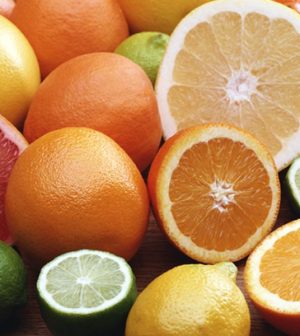- Skip Storing This Everyday Product in the Fridge Door
- Green Tea + B3 Pairing May Boost Brain Health
- Navigating Your Midlife Crisis: Embracing New Possibilities
- City Raccoons Showing Signs of Domestication
- Mapping the Exposome: Science Broadens Focus to Environmental Disease Triggers
- One Week Less on Social Media Linked to Better Mental Health
- Your Brain Changes in Stages as You Age, Study Finds
- Some Suicide Victims Show No Typical Warning Signs, Study Finds
- ByHeart Formula Faces Lawsuits After Babies Sickened With Botulism
- Switch to Vegan Diet Could Cut Your Greenhouse Gas Emissions in Half
The Top 5 Fruits to Add to Your Diet

Ounce for ounce and calorie for calorie, leafy greens and other types of vegetables are the hands-down favorites for delivering on nutrients. But many fruits should also have a place at the table.
Researchers looked at the most nutrient-dense fruits and vegetables to see which provided meaningful amounts of B vitamins including thiamin, riboflavin, niacin, folate, B6 and B12, vitamins C and K, iron, fiber and protein. Most of the top spots on their ranked list of powerhouse fruits — those most strongly associated with reducing the risk of chronic diseases — were various citrus fruits with one popular berry mixed in.
The Top 5 Nutrient-Dense Fruits
- Lemons
- Strawberries
- Oranges
- Limes
- Pink and red grapefruit
As terrific as blueberries are considered, blackberries were actually the next fruit on the list, followed by white grapefruit. Now this isn’t to say that blueberries, which many studies rank very high for antioxidants and other healthful compounds, shouldn’t be on your shopping list along with raspberries. Eating fruits in a rainbow of colors gets you the widest variety of nutrients and phyto-nutrients — those hard-to-duplicate compounds that go beyond vitamins and minerals.
It’s also important to pay attention to a fruit’s ripeness. Studies show that ripe fruits, including all berries, offer more antioxidants than fruits that are not quite ready. Based on that criteria, strawberries topped the list, followed by black raspberries, blackberries and red raspberries in that order.
Remember that fruits have more calories than vegetables, so watch your portion sizes. After all, you could eat 10 cups of arugula lettuce for the same calories that are in one cup of strawberries, but in an ideal diet, you’ll want to make room for both.
More information
You can read the full report on the healthiest fruits on the website of the U.S. Centers for Disease Control and Prevention.
Source: HealthDay
Copyright © 2025 HealthDay. All rights reserved.










